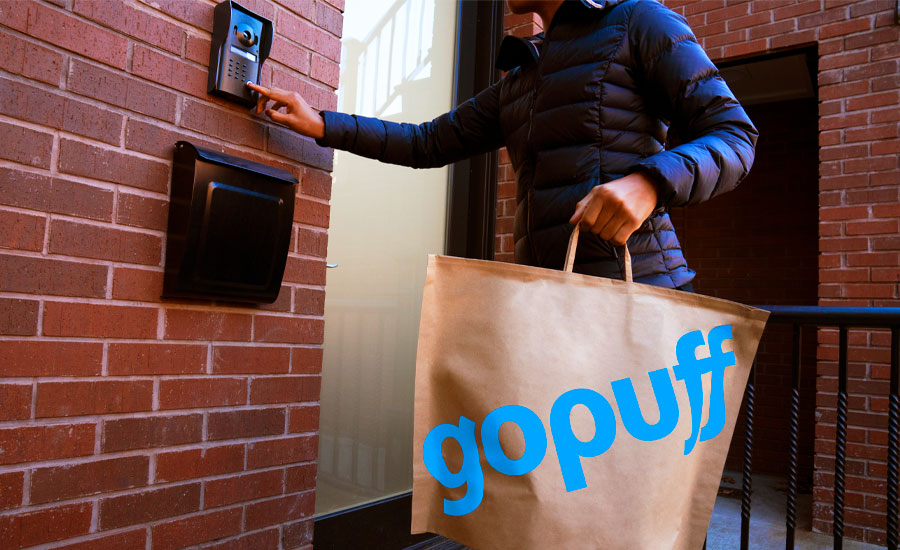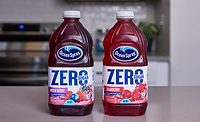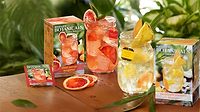Direct-to-consumer platforms offer benefits for both brands and consumers
Convenience, prices and products factor into consumers opting for DTC platforms

Photo courtesy of Getty Images
In the 1971 film “Willy Wonka and the Chocolate Factory,” a very bratty Veruca Salt is one of the children who won a golden ticket for a visit to the factory. While there, Veruca sings the song “I Want It Now,” listing outrageous demands like performing baboons and ten thousand tons of ice cream.
Although not done in a musical, bratty manner, consumers increasingly are looking for ways to get what they want as fast as possible. One way consumers can do so is through the use of digital delivery platforms.
Zac Brandenberg, co-founder and CEO of Los Angeles-based DRINKS, shares the factors he believes are driving the use of digital technology with consumers.
“Convenience, price transparency and the growing population of digital natives who grew up purchasing products online are fueling usage and growth,” he says. “In alcohol, the latter are poised to have a big impact as Gen Z ages and younger cohorts become of legal drinking age.”
Brandenberg says that direct-to-consumer (DTC) commerce shopping habits are category dependent.
“Beverages alcohol, our category focus, is a special case owing to its heavily regulated nature at the federal, state and local levels,” he explains. “That regulation, along with related complex tax compliance requirements, have been roadblocks to eCommerce’s inherent ‘easy shopping, reduced friction’ nature.”
DRINKS has spent the past decade changing that by developing technology that works in the background to satisfy these many requirements and enable adults to have an enjoyable, personally relevant and seamless shopping, purchasing and delivery experience within a fully legally complaint framework, Brandenberg shares.
He feels that eCommerce is the alcohol industry’s biggest growth driver
“Technology like ours combined with COVID-19-era impacts accelerated online sales from $7.6 billion in 2019 to $15.5 billion last year, and $21 billion is projected within five years,” Brandenberg says. “That’s remarkable in a category that less than half of all Americans thought could even be legally transacted just 10 years ago.”
The expert says the growth of opportunity contrasts with what’s going on with delivery-centric, maturing online marketplaces like UberEats and Instacart, which are “increasingly becoming a market share battleground” amidst slowing growth.
Philadelphia-based consumer goods and food and drink delivery company Gopuff says that it is no secret that consumers are both doing more of their daily shopping online, while also demanding faster and faster delivery.
Many of the company’s consumer packaged goods (CPG) partners spend millions of dollars on digital advertising and media every year with no way to convert viewers to shoppers because they do not have an eCommerce solution, it notes.
“Gopuff, having spent the last 11 years building a vast logistics network to enable affordable, instant delivery, is uniquely positioned to deliver on consumer expectations for speed,” says Daniel Folkman, senior vice president of business at Gopuff. “Now, with Powered by Gopuff, we’re providing our partners with the tools they need to deliver on those expectations and collapse the purchase funnel — from delivery to consumption — in as little as 15 minutes.”
Folkman suggests that the promise of speed unlocks new buying behaviors and incremental shopping occasions for Gopuff’s partners. He also feels that the trend of online shopping is only going to continue to grow.
“With this in mind, our goal is to enable instant commerce and enhance the experience wherever consumers shop online,” Folkman says. “We’re giving consumers the ability to discover, purchase and receive products instantly, wherever they’re spending their time online.”
He notes that the company has been impressed by the consumer demand for Powered by Gopuff right out of the gate.
“Consumers are increasingly shopping online and being served ads — now, for the first time, they have the opportunity to easily purchase CPG products — and then have them in-hand in minutes,” Folkman says. “As a result, we’ve also seen a ton of demand from brands who are looking to leverage Powered by Gopuff to make their online media spend shoppable, measurable and more effective.”

Turning to DTC
Certain demographics are most comfortable utilizing DTC platforms for shopping more than others.
DRINKS’ Brandenberg says that digital natives and near-natives are often identified as early online DTC adapters, specifically 18- to 34-year-olds. The highest volume consumers DRINKS’ tech serves are currently ages 34 to 54. This represents “a far larger cohort” than the newly legal 21-year-olds through 34-year-olds, he notes.
“These numbers are consistent with alcohol sales trends overall, where older consumers represent higher volume purchasers who also spend more per purchase,” Brandenberg explains. “That said, as more digital natives reach legal drinking age, over time, we expect eCommerce growth to start skewing more to these younger, fully-digital natives, whose first inclination is to find and buy online.”
According to Gopuff, the demographics are largely dependable on who the brands want to target.
“One of the benefits of running a DTC website is that you can drive your online ads directly to your shoppable website,” the company says. “It’s a bring-your-own-demand platform that gives partners the ability to connect directly with their customers.”
As more brands invest in DTC platforms, they are discovering the benefits of such technology.
DRINKS’ Brandenberg says that DTC offers alcohol brands a myriad of benefits that are not available through brick-and-mortar sales.
“For one, the opportunity to build direct relationships with end purchasers; next, visibility to zero-party and first-party data to see who is actually buying and where; and third, immediate access to product feedback, to name just a few,” he notes. “Wineries in particular have already seen how DTC can open up direct distribution opportunities across the United States. And overall, online access to alcohol products increases the total addressable market opportunity.”
DTC also expands customer choice and access, Brandenberg says, particularly in markets where regulatory restrictions have limited shopping access points, the products available to consumers or other impediments.
Gopuff shares the following benefits that brands can receive using their own eCommerce websites:
Customize and brand the shopping experience
Maintain ownership of customer relationships and enable access to critical first-party data to power future growth
Collapse the funnel, taking consumers from product discovery to consumption in minutes
Build, manage and grow their own DTC sales channel
More control over pricing, fees and, ultimately, profit margins through DTC
As for potential challenges brands might face when operating their own DTC network, DRINKS’ Brandenberg says that there tends to be “a substantial expertise gap” when it comes to building a digital presence.
“This is even more challenging for those operating in highly regulated industries, such as beverage alcohol,” he states. “Along with building the technology, producers are required to obtain permits at both the state and federal levels in order to ship alcohol across state lines. Additionally, there are tax obligations and compliance rules that don’t apply to many other industries such as volume limits and age verification, given the product that is being sold.”
Such friction points have been a significant contributor to the delayed embrace of digital by the Bev Alc industry, Brandenberg says, as well as a key reason why DRINKS technology is so critical for its partners, as it allows them to focus on growing and scaling their businesses safely.
Looking forward, the expert also weighs in on which beverage categories hold the most promise with DTC.
“There’s tremendous room to run across all segments of beverage alcohol,” Brandenberg shares. “Wineries, and producers of non-alcoholic beverages, have the easiest framework to navigate; the landscape for three-tier compliant shipping continues to evolve positively and is the next frontier. Spirits, which face a more complex regulatory landscape, are becoming more poised than ever to accelerate DTC sales in a fully legally compliant way and represent the next big growth frontier.”
He notes that alcohol is one of the fastest growing verticals in the United States and is anticipated to scale from $250 billion today to more than $300 billion by 2030. However, Brandenberg says the real opportunity is on the digital side, where the expected compound annual growth rate (CAGR) far exceeds the overall industry growth.
“The clear inclination of consumers to shop and engage online, combined with a product category that has long lagged to meet the digital demand, makes for a massive opportunity,” he concludes.
Looking for a reprint of this article?
From high-res PDFs to custom plaques, order your copy today!







